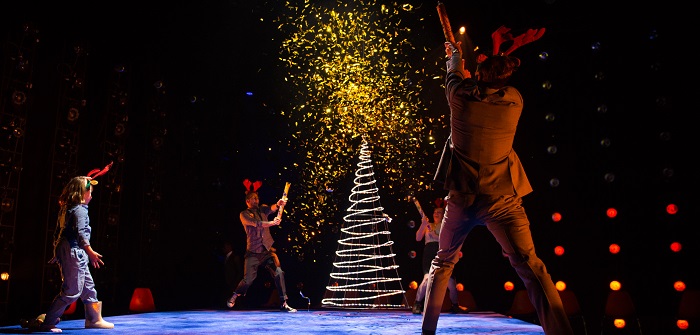Presented by State Theatre Company
Reviewed 4th July, 2017
As the inaugural project of the State Theatre Company‘s Ensemble, this sharp-eyed adaptation of Ibsen’s proto-feminist tract offers much food for thought, whilst it weaves multiple storylines in entertaining ways. Actor and playwright Elena Carapetis has written a finely-judged updating of Henrik Ibsen’s famous play. When A Doll’s House was first performed in 1880, Copenhagen’s Theatre Royal resounded with anger, outrage and vehement criticism. The mere thought of a married woman choosing to leave her husband and children was so unthinkable that poor Ibsen was forced to rewrite the ending so the show could go on in Germany. He loudly regretted (and rescinded) it.
In this production, blessed by Geoff Cobham’s set and lighting designs, entirely recognisable contemporary characters face all the personal and societal challenges of Ibsen’s script, thanks to Carapetis’ agile and imaginative writing. While remaining remarkably true to the rhythms of the original text in many areas, Carapetis has employed such contemporary devices as credit cards and mobile phones to drive the plot forward. Accents are educated Australian. The location is clearly in the southern hemisphere (it’s Christmas-time, and it’s stinking hot), but nothing indicates a precise location. In this show, the most interesting geography is that of the human heart.

Photo Credit: Andy Rasheed
Nora Helmer, the doll within the doll’s house, is played by Miranda Daughtry with such a beautifully-judged progression of character that we willingly follow her journey. At the beginning of act one, she says to her husband, “It’s expensive to be me”, accompanied by a shrug and a winning smile. At the end of act two, she says to him, ”You kept me small and stupid.” Dale March, as Nora’s husband, lawyer Torvald Helmer, has more than sufficient strength and resilience to provide a foil for Daughtry’s kaleidoscopic Nora. Whilst portraying traditional male authority, March still makes it clear that Torvald is himself as much a prisoner of societal expectations as is his seemingly frivolous wife. Daughtry and March are the two central figures. They loom over every scene, whether present or not. It is their show.
One of the high spots of the evening occurs at the beginning of act two, with Rachel Burke (as widow Kristina Linde) and Rashidi Edward (as barrister Nils Krogstad) together searing the stage with the intensity and truthfulness of their complex duologue. They are both remarkable young actors, showing great skill and even more potential. Dr Rank (played by Nathan O’Keefe, who can do practically anything) is terminally ill and incurably infatuated. O’Keefe avoids evident physical frailty, using artificial jollity to mask his quiet progression toward suicide before his illness worsens. Bringing both strength and subtlety to her role as Anna, the nanny, Anna Steen manages to anchor her steadfast and honest character within every scene she plays.
Cobham’s design is superb. The bare stage has three walls of lights, rigged floor-to-ceiling. That’s it. No backdrop. The rig enables a nuanced range of lighting states. The centre of the stage has a raised rectangle where all the action occurs. It’s on an agonisingly slow but relentless revolve during the first act. In act two, it’s static. The only furniture -16 bright orange plastic stackable chairs. They are casually scattered around the central raised platform in act one, with actors off-stage simply sitting there. In act two, the orange chairs are neatly arranged on three sides of the raised rectangle. They remind me of an inquisition.
There’s chocolates, Christmas presents, a seductive dance at a fancy-dress party by Nora, and sporadic appearances of a 7-year old, accompanied by her indefatigable nanny. Dale March does a fine Guys and Dolls audition piece – a dynamic song-and-dance performance of “Luck, be a lady” (with Nathan O’Keefe on backing vocals). Director Brookman knows where the mood needs to be lightened in order to enhance descent into the darknesses of the soul. For my taste, I would have relished a little more darkness. As Carapetis implies in her reimagining of this canonical theatre text, the arguments Ibsen made still need to be addressed by today’s society. This is Ibsen for now.
Reviewed by Pat. H. Wilson
Venue: Dunstan Playhouse
Season: Until 22nd July, 2017
Duration: 2 hours, 40 minutes
Tickets: Full Price: $74:00 Concession: from $51:00
Bookings: BASS




















